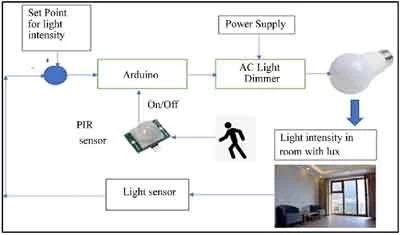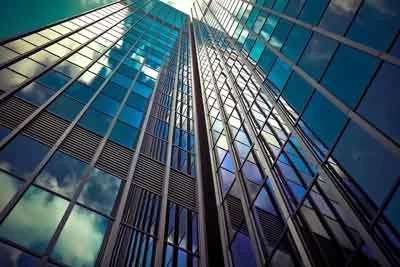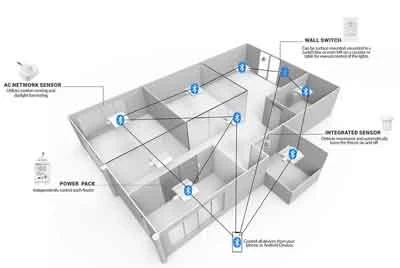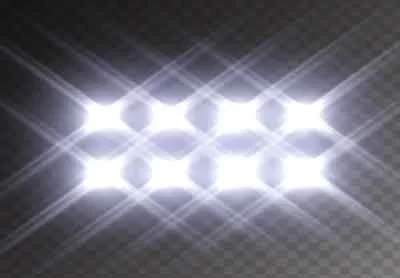BAS for Lighting Control: Balancing Efficiency

Building automation systems (BAS) integrate various components within a building's infrastructure, including heating, ventilation, air conditioning (HVAC), and notably, lighting and controls. The essence of these systems lies in their ability to enhance the functionality, comfort, and energy efficiency of building environments. As we delve deeper into the realm of building automation, lighting becomes a critical element that intertwines occupant well-being with energy consumption. This article explores the nuanced balance between human-centric lighting and energy efficiency, highlighting the technical and performance considerations essential for optimized building automation.
Visit Our Building Automation Study Course
Human-Centric Lighting: Enhancing Occupant Well-Being
Human-centric lighting (HCL) emphasizes the importance of lighting in supporting human health and productivity. It goes beyond mere illumination, focusing on aspects such as color temperature shifts and personalized light levels that align with the circadian rhythms of occupants. HCL systems are designed to mimic natural daylight patterns, providing a dynamic lighting environment that evolves throughout the day. This approach can lead to improved mood, enhanced sleep quality, and increased productivity among building occupants.
However, implementing HCL presents certain challenges. The technology requires advanced lighting control systems capable of adjusting light intensity, color temperature, and distribution based on time of day or occupant preferences. Such systems often involve complex sensors and programmable controls, necessitating a higher initial investment and sophisticated maintenance protocols.
Energy Efficiency: A Sustainable Objective
In the face of global environmental concerns, energy efficiency in building automation has gained paramount importance. Efficient lighting controls play a vital role in reducing a building's overall energy consumption, thereby decreasing operational costs and contributing to sustainability goals. Techniques like daylight harvesting, where natural light is maximized to reduce artificial lighting usage, and occupancy sensors, which ensure lights are on only when needed, are key strategies in energy-efficient lighting design.
Yet, the pursuit of energy efficiency can sometimes clash with the objectives of human-centric lighting. For instance, the aggressive dimming of lights to save energy may compromise the quality of lighting needed for optimal human performance and comfort.
Finding the Optimal Balance
To address the potential tension between human-centric lighting and energy efficiency, it is crucial to implement a holistic approach that considers both aspects in the lighting design and control strategy. Modern BAS should be equipped with intelligent lighting controls that can dynamically balance energy-saving measures with the need for quality lighting based on real-time data and occupancy patterns.
Advanced algorithms and machine learning can play a significant role in this balancing act. They can predict and adjust lighting levels not only based on the time of day or presence of individuals but also considering external factors like weather conditions and seasonal variations. This intelligent automation can ensure that energy efficiency and human-centric lighting objectives are not mutually exclusive but rather complementary.
Technical Considerations and Performance
From a technical standpoint, the integration of HCL and energy-efficient lighting in a BAS requires careful planning and consideration. Key factors include:
- System Compatibility: Ensuring that all components of the lighting system, such as sensors, controllers, and light fixtures, are compatible and can communicate effectively.
- Scalability: Designing a system that can adapt to future changes or expansions in the building infrastructure.
- Data Management: Implementing robust data analytics tools to monitor and optimize lighting performance, energy consumption, and occupant comfort.
- Regulatory Compliance: Adhering to local and international standards for lighting quality and energy efficiency.
Performance metrics, such as energy savings, lighting quality, and occupant satisfaction, are crucial in evaluating the success of integrated lighting controls in a BAS. Continuous monitoring and optimization are necessary to ensure that the system performs efficiently and effectively over time.
The integration of human-centric lighting and energy efficiency in building automation presents a complex but rewarding challenge. By embracing advanced technologies and adopting a holistic approach, it is possible to create lighting systems that support both the well-being of occupants and the sustainability goals of buildings. As the industry progresses, the synergy between lighting quality and energy efficiency will continue to evolve, leading to more sophisticated and responsive building automation solutions.






